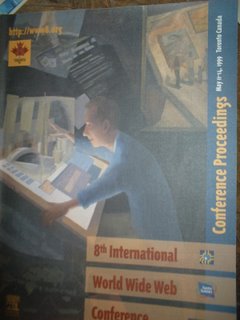Eric Norlin
posts on Verisign's just announced
PIP.
Eric emphasizes PIP's support for
Yadis.
And since it works with YADIS, its not simply limited to OpenID (or LiveJournal) sites.
I don't think so (at least not for this version)
YADIS allows a Relying Party, when presented with a URI corresponding to a PIP-hosted identity, to determine which URI-based identity protocols PIP supports by obtaining a descriptor document. But, at least currently, PIP only supports
OpenID so any descriptor document that PIP serves up can only indicate OpenID support. If you look at the YADIS Resource Descriptor for Verisign's PIP, you see
<?xml version="1.0" encoding="UTF-8"?>
<xrds:XRDS
xmlns:xrds="xri://$xrds"
xmlns:openid="http://openid.net/xmlns/1.0"
xmlns="xri://$xrd*($v*2.0)">
<XRD>
<Service priority="10">
<Type>http://openid.net/signon/1.1</Type>
<Type>http://openid.net/sreg/1.0</Type>
<URI>http://username.pip.verisignlabs.com/server</URI>
</Service>
<Service priority="20">
<Type>http://openid.net/signon/1.0</Type>
<Type>http://openid.net/sreg/1.0</Type>
<URI>http://username.pip.verisignlabs.com/server</URI>
</Service>
</XRD>
</xrds:XRDS>
Nothing but OpenId. So, while it may be nice for a LID (or other system)-based RP to retrieve this XML and discover this fact, it won't magically enable that RP to communicate with the OpenID-based PIP.
YADIS, like
WSSOMEX enables identity suite capability discovery (ISCD? sure, why not), not identity suite interoperability.
Put another way, simply knowing that you and your spouse are incompatible will not magically make you compatible (but it could save you big bucks in marriage therapy bills).








